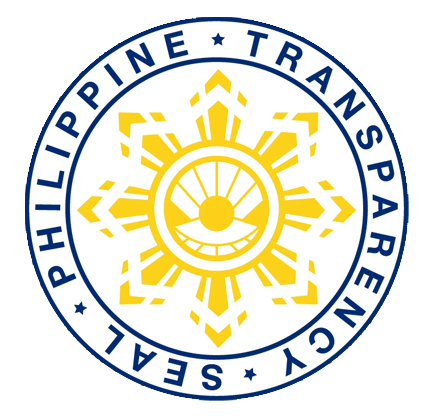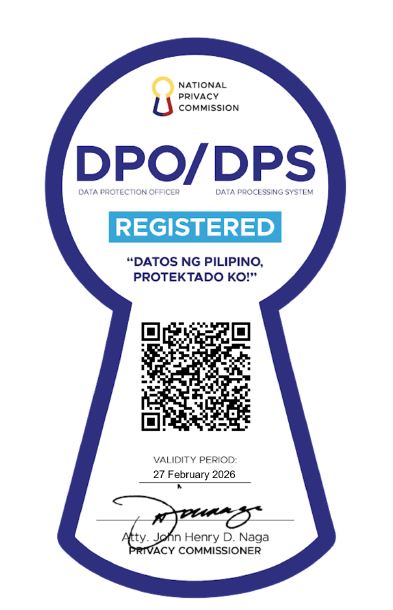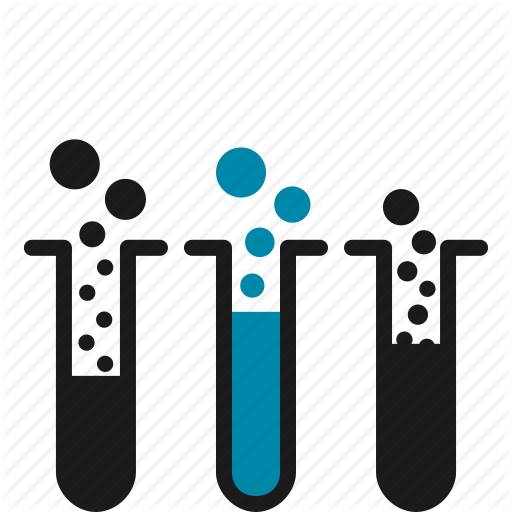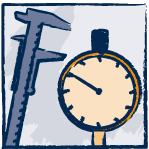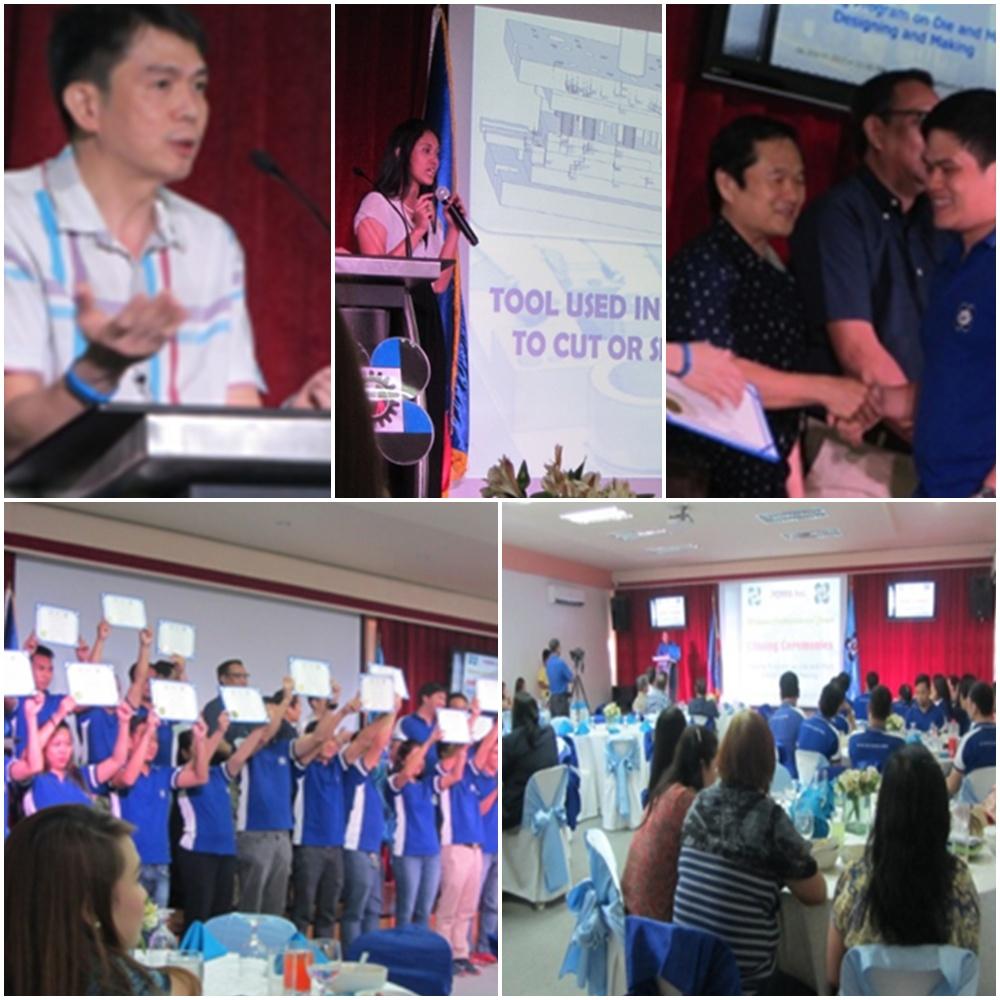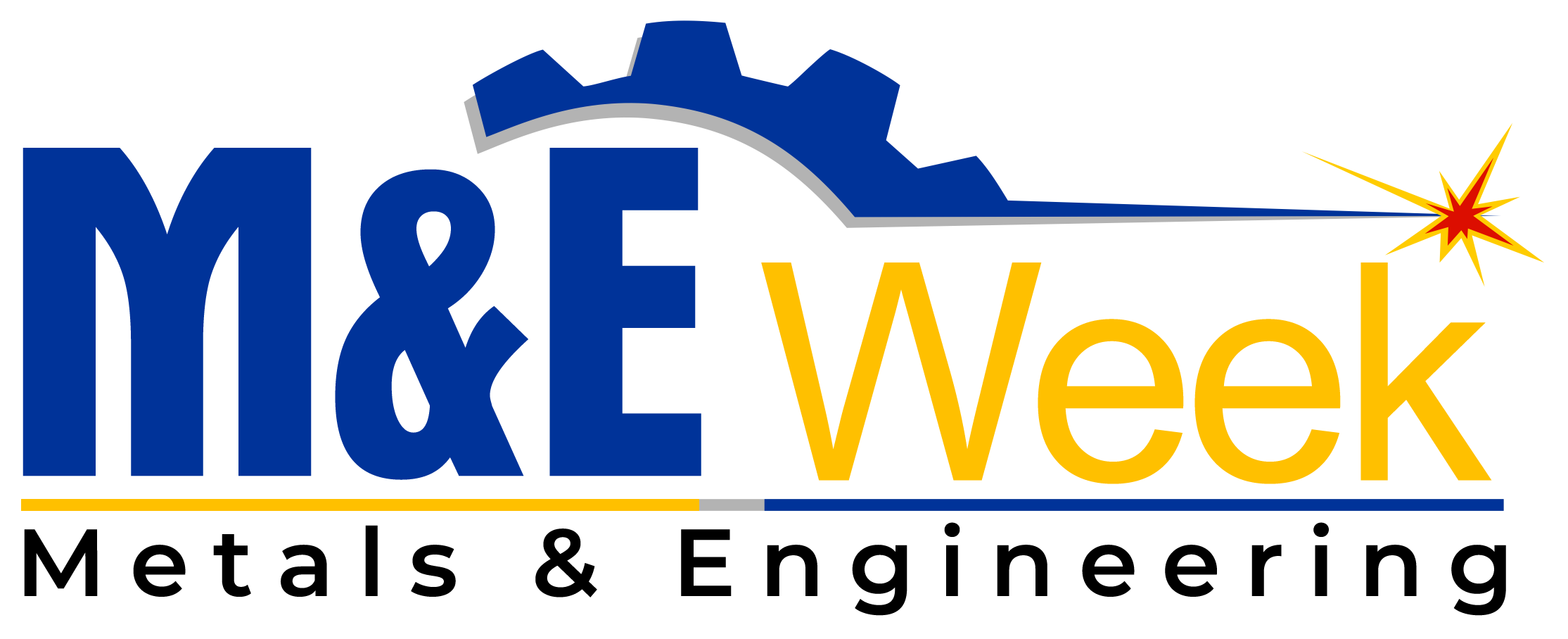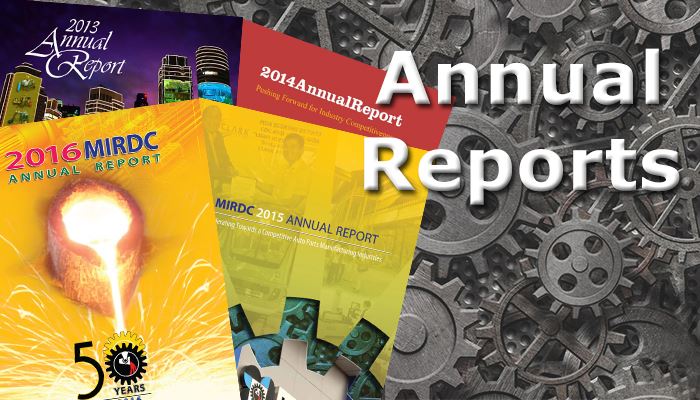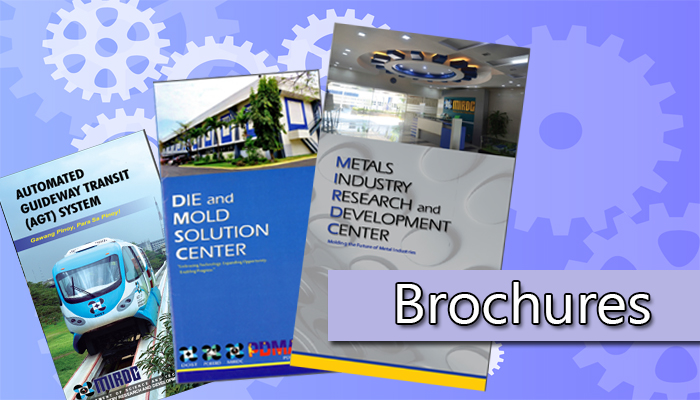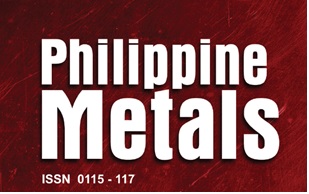"Molding the Future of Metal Industries"
The Metals Industry Research and Development Center (MIRDC) of the Department of Science and Technology (DOST), in partnership with Philippine Center for Postharvest Development and Mechanization
(PhilMech), is initiating a prototype equipment for design and development for the project entitled “Design and Development of Hand Tractor Attachments (Harvester and Transplanter)” are transplanter-attached handtractor and har vester-attached-handtractor. The concept of developing rice transplanting and harvesting implements that can be readily mounted to and dismounted from the hand tractor unit is a relatively new concept. The availability of such implements will significantly increase further the utilization of hand tractor in farm areas. Moreover, it can potentially reduce the cost of farm level mechanization. The target beneficiaries of this project are the farmers, rice field owners and planters, agri-cooperatives and local
fabricator shops.
Unlike commercially available transplanters and harvesters which are self-propelled and dedicated machines, these mechanisms are integration of a transplanter or harvester to a hand tractor which can be readily disassembled in order for the hand tractor to be usable for other farm operations . The transplanter-attached-handtractor is driven by 7HP diesel engine, with a 6-row planting capacity. Its planting distance is within 20cm to 25cm as required by the Philippine Agricultural Engineering Standards (PAES). Furthermore, it has also adjustable planting depth comparable to commercially available transplanters. The harvester-attached-handtractor is driven by 9HP diesel engine, with target working efficiency of 500m2/hour.
Overall, the transplanter-attached-handtractor and harvester-attached-handtractor offer many operational
and financial benefits. By using these mechanisms, an appropriate, efficient and effective transplanting and harvesting functionalities will be added to plowing, tilling and harrowing, which a hand tractor can perform. This will also address the delayed or longer transplanting and harvesting period and its high labor cost due to lengthy job.
As of December 2013, the transplanter-attached handtractor prototype was completed and field testing wil be conducted in January 2014. The design, prototyping and testing of harvester-attachedhandtractor is also expected to be completed in 2014.
"Molding the Future of Metal Industries"
The Metals Industry Research and Development Center (MIRDC) through its Technology Information and Promotion Section (TIPS) is currently conducting a survey of metalworking firms engaged in welding and electroplating processes to determine the status of the said sectors. Aside from general information, the study also focuses on industry, market and technical aspects of operation. Through the survey, the electroplating and welding sectors’ production capacity and technical profile will be determined. Pertinent information will be provided to our policy makers, policy implementers and members of the industry to be used for decision-making and formulation of recommendations in terms of facilities upgrading, personnel development and investment incentives.
To do away with time-consuming survey, the staff verified information from previous surveys to update company’s profile. The Center assures the respondent-firms that all information will be treated with utmost confidentiality. Data will be consolidated and analyzed. The initial reports will be subjected to further validation through focus group discussions. The final report will then be published after a series of reviews.
The MIRDC will make the sector report easily accessible to those who need it: the government in the legislative and cabinet level for mapping out more accurate planning strategies; the government in the agency level for addressing the problems of the said sectors; the concerned public and private organizations for developing roadmaps to fulfill and the technology and training requirements of the industry; all firms in the M&E industries for identifying and implementing relevant S & T interventions. Ultimately, the respondent –firms will receive significant benefits from this initiative. The government can generate better programs including training, consultancy and financial assistance in order to boost the industry’s competitiveness. The respondent-firms are given priority to receive these benefits from the program of the government.

"Molding the Future of Metal Industries"
The Metals Industry Research and Development Center (MIRDC) of the Department of Science and Technology had its new certifying body TUV Rheinland Philippines, Inc. for undergoing ISO recertification on February 27, 2015. This effort of the Center to get serious in the implementation of Quality Environmental and Management System (QEMS) assures the customers that the products and services MIRDC produces met their requirements. The MIRDC top management monitors the non-conformities in implementing and sustaining the effectiveness of its QEMS.
The TUV auditors are Mr. Rolando Remitar, Mr. John Fausto Faustorilla, Ms. Rosehleen Anjela Buenavista and Ms. Xylene Tagorio led by Ms. Lucia Lopez. The scope of the audit includes: provision of services on research and development of equipment, products, processes and materials; industrial training, technical consultancy, technology transfer, and technical information dissemination; machining, heat treatment, casting, welding, and fabrication of metal products.
QEMS key personnel has great challenges at MIRDC because of the implementation of various projects which requires more productivity at the same time that the QEMS calls for quality improvement as required by the ISO 9001 standards, 2008 version.
MIRDC’s continuing registration to ISO 9001: 2008 is a proof of the Center’s commitment to realize its vision to be a center of excellence in science, technology and innovation for a globally-competitive metals, engineering and allied industries by 2025. With the dynamic leadership of the MIRDC managers, and the core values such as Professionalism, Responsiveness, Integrity, Dynamism and Excellence (PRIDE) deeply imbibed in its workforce, the Center continuously maintains a QEMS that is anchored on its commitment to provide the highest level of satisfaction to both its internal and external customers.
MIRDC’s previous certifying body is TUV - SUD.
"Molding the Future of Metal Industries"
The 2015 Deployment of Plans and Activities of the Metals Industry Research and Development Center (MIRDC) held last March 3, 2015 marked the beginning of a more effectivestrategic agenda to help position the agency to function more efficiently as it roots for a more advanced M&E industries. The plans and activities that were presented to the MIRDC employees constitute the administrative plans and technology initiatives that are essential in achieving the agency’s new vision, mission, strategic objectives/thrusts and core values.

of the 2015 Deployment of Plans and present their accomplishments,
and Activities. plans and projects for 2015.
An important facet of the 2015 Deployment of Plans and Activities is leveraging information to update the MIRDC personnel on how new competencies are well-thought-out to further enhance the performance of the agency. Asec. Robert O. Dizon shared with the employees the outputs of the recently concluded Strategic Planning, particularly the vision, mission, strategic objectives/thrusts and core values that have been revised parallel to the goal of the MIRDC to be more relevant to a competitive M&E industries. The agency’s new mission and vision, duly approved by the Governing Council, are set to get off to a flying start as these are attuned not only to the strengths and weaknesses, but also to the programs and outcomes of the agency. Prior to the aforementioned goal, each division head including the MIRDC Employees Labor Association (SALEM)President, Mr. Galicano Enerlan, were given time to present their accomplishments and plans, in accordance with their respective functions.
|
Present |
Approved by GC |
|
|
Vision |
An internationally recognized institution providing research & development, technology transfer, scientific and technological services supporting the growth and global competitiveness of the metals, engineering and allied industries. |
Center of excellence in science, technology and innovation for a globally-competitive metals, engineering and allied industries by 2025. |
|
Mission |
To provide both government and private sectors in the metals and engineering industry with professional management and technical expertise on the training of engineers and technicians; information exchange; trade accreditation service ; quality control and testing of metal products; research and development; and business economics advisory services. |
To provide both government and private sectors in the metals, engineering, and allied industries with professional management and technical expertise on the training of engineers and technicians; information exchange; quality control and testing; research and development; technology transfer; and business economics advisory services. |
|
Strategic Objectives/ Thrusts |
FIRST Focus on Customers Industry Competitiveness Resource Management Service Delivery Improvement Teamworking and Networking |
FIRST Focus on Customers Industry Competitiveness Responsive to National Priorities Service Improvement Technological Self-Reliance |
|
Core Values |
MIRDC eMpowerment Integrity Respect Dynamism Commitment |
PRIDE Professionalism Responsiveness Integrity Dynamism Excellence |
The Vision, Mission, Strategic Thrusts and Core Values approved by the Governing Council were presented by Asec. Dizon during the Deployment of Plans and Activities for 2015.
Secretary Mario G. Montejo surprised the MIRDC employees when he graced the event with his presence. In his message, he shared his observations from his recent visit to Iran and Israel where he witnessed how the government supports technology starting from the development of ideas up to prototyping. In connection to this, he relayed the idea that the MIRDC holds one of the most important tasks when it comes to supporting advancement of technology. His message left everybody inspired and motivated to focus on MIRDC’s function of supporting, empowering and assisting innovations.

- Secretary Montejo reminds MIRDC employess about the agency's role in promoting and sustaining technological innovation.

- MIRDC Top Management responds to questions from MIRDC employees.
The deployment had also been a channel to a more intensified interest especially in the human resources as it sparked off questions from the employees as soon as the floor was opened for discussion. Issues and concerns were raised but were given appropriate response by the Top Management. At the end of the assembly, Asec. Dizon’s message marked a point that reflects a push among employees. He stated that being informed about the agency’s plans and projects means that employees will essentially know the significance of every task that are assigned to them and could make them proud. Being proud of one’s task, according to Asec. Dizon, is the key to better performance.
"Molding the Future of Metal Industries"
A total of 20 beneficiaries of free training proudly received their certificates of training during their graduation held on March 6, 2015 at the Platinum Auditorium, DMSC, MIRDC, Bicutan, Taguig City. The trainee-graduates make up the first batch of the training on Die and Mold Designing and Making under the project “Establishment of a Die and Mold Solution Center in Support of the Components and Parts Manufacturing Industry.”
The project is implemented by the MIRDC under the DOST’s Makinarya at Teknolohiya Para sa Bayan (MakiBayan) initiative. Such training aims to help the participants to be able to identify different types of materials used in the die/mold fabrication, as well as to design, fabricate and repair simple and complex dies and molds using CAD/CAM in accordance with ISO standard. The six-month training covers the following modules:
|
Part I |
Technical Drawing and Geometrical Dimensioning & Tolerancing |
|
Part II |
Die Design/Safety, Repairs and Maintenance |
|
Part III |
Plastic Injection Mold Design |
|
Part IV |
CAD Design Fundamentals |
|
Part V |
CAD (Die Design Solution/Simulation) |
|
Part VI |
CAD (Mold Design Solution/Simulation) |
|
Part VII |
Heat Treatment |
|
Part VIII |
Machine Shop Operation |
|
Part IX |
CNC Turning and Milling |
|
Part X |
CNC-EDM Wire Cutting |
|
Part XI |
CNC-EDM Sinking |
|
Part XII |
CAM/NC Solution (Die/Mold Making) |
|
Part XIII |
Actual Die/Mold Design, Fabrication, Assembly & Trial Shot by Participants |
At their graduation, the die and mold trainee-graduates showcased their acquired knowledge through their project presentations and expressed their gratefulness to the training in the presence of the MIRDC management together with the project team headed by Engr. Fred P. Liza as well as the officials of the partner support organization, the Philippine Die and Mold Association (PDMA). Engr. Robert O. Dizon, Assistant Secretary of DOST and Officer-in-Charge of the MIRDC, inspired the graduates to apply their learning to contribute to the growth and development in a competitive industry.
(Clockwise): Engr. Robert O. Dizon, MIRDC OIC, gives his inspirational talk; trainee-graduate shows her project presentation; Mr. Philip C. Ang, PDMA President, awards the certificates; Engr. Fred P. Liza, Chief of MIRDC-PD and Project Leader congratulates trainee-graduates on his speech; and the proud graduates with their certificates.

